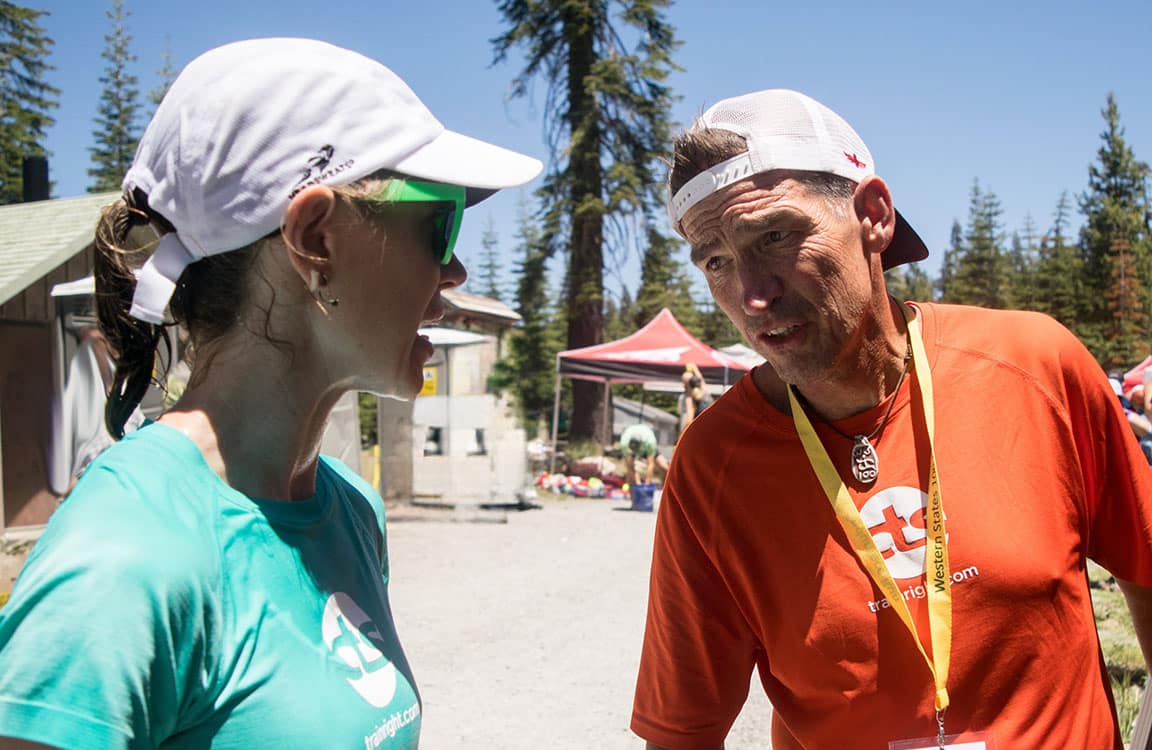
Defeating Give-Up-Itis in Trail and Ultra Running
By Andy Jones-Wilkins,
CTS Ultrarunning Pro Coach
When I was coming of age in ultrarunning in the 1990s, I was fortunate to have very good mentors. Four, in particular – John Medinger, Tim Twietmeyer, Ann Trason, and Tommy Nielsen — all took me under their collective wings and fed me with knowledge and wisdom. When I was preparing for my first 100-mile race in 2000 after eight years of running shorter distances, these four great guides each gave me more or less the same simple and poignant advice for 100-mile success: “Control the controllables.”
Learned Helplessness and Learned Hopefulness
I thought back to this memorable advice while reading Steve Magness’s fantastic new book, “Do Hard Things: Why We Get Resilience Wrong and the Surprising Science of Real Toughness.” In the book, Magness outlines an entirely new perspective on how toughness is built, which rebuts some of the most prevalent traditional views of toughness building. Citing examples from athletics, business, education, and the military, Magness suggests that toughness is not built out of a “sink or swim” approach, but rather through deliberative training, thoughtful nurturing, and a flexible culture.
In what is to me the most compelling section of the book as it relates to long-distance running, Magness describes the distinction between learned helplessness and learned hopefulness. With direct scientific data, he explains that when people don’t have control over their fate or opportunities to choose, they become apathetic and are inclined to give up.
Understanding “Give-up-itis”
Using the phrase “give-up-itis,” he suggests that the tendency to quit is something akin to a disease that we must fight to defeat, perhaps even inoculate ourselves to. And, Magness suggests that the best way to do this is by giving people control, the ability to make choices, and the ability to be autonomous.
To me, this has tremendous relevance to ultrarunning. I have seen “give-up-itis” live and in person in many of the 100-mile races I have attended in recent years. Often, for no apparent physical reason, runners just quit. Perhaps lack of control, choice, and autonomy contributed to their DNFs. I am not sure, but Magness certainly got me thinking.
Defeating Give-up-itis
A couple years ago I coached a relatively inexperienced athlete for Western States. She worked to do everything right. Her training, nutrition, gear, and race day execution were all spot on. Unfortunately, less than two miles before the finish line, she could not continue and missed the cutoff time by staying at the 98.7-mile aid station.
In our post-race meeting she was understandably distraught, at one point asking me, “Do you think I can even do these things?”
► Free Ultrarunning Training Assessment Quiz
Take our free 2-minute quiz to discover how effective your training is and get recommendations for how you can improve.
To which I said, “Yes, absolutely! In fact, I think you should sign up for something right now!”
Enjoying This Article? Get More Free Running Training Tips
Get our coaches' best training advice, delivered straight to your inbox weekly.
Which is precisely what she did. Just a few months after her DNF at Western States she conquered give-up-it is and successfully finished the Javelina Jundred in just over 25 hours. And she didn’t stop there. In October 2023 she once again returned to Javelina, ran two hours faster, and broke the elusive 24-hour barrier! She learned to fight back against “give-up-itis” and won.
AJW’s Recommendation: Read “Do Hard Things”
Steve Magness proves time and again that toughness is both born and made, and “Do Hard Things” provides a wonderful road map for coaches and athletes as we think about real toughness, how to develop it, and ultimately how to harness it.
